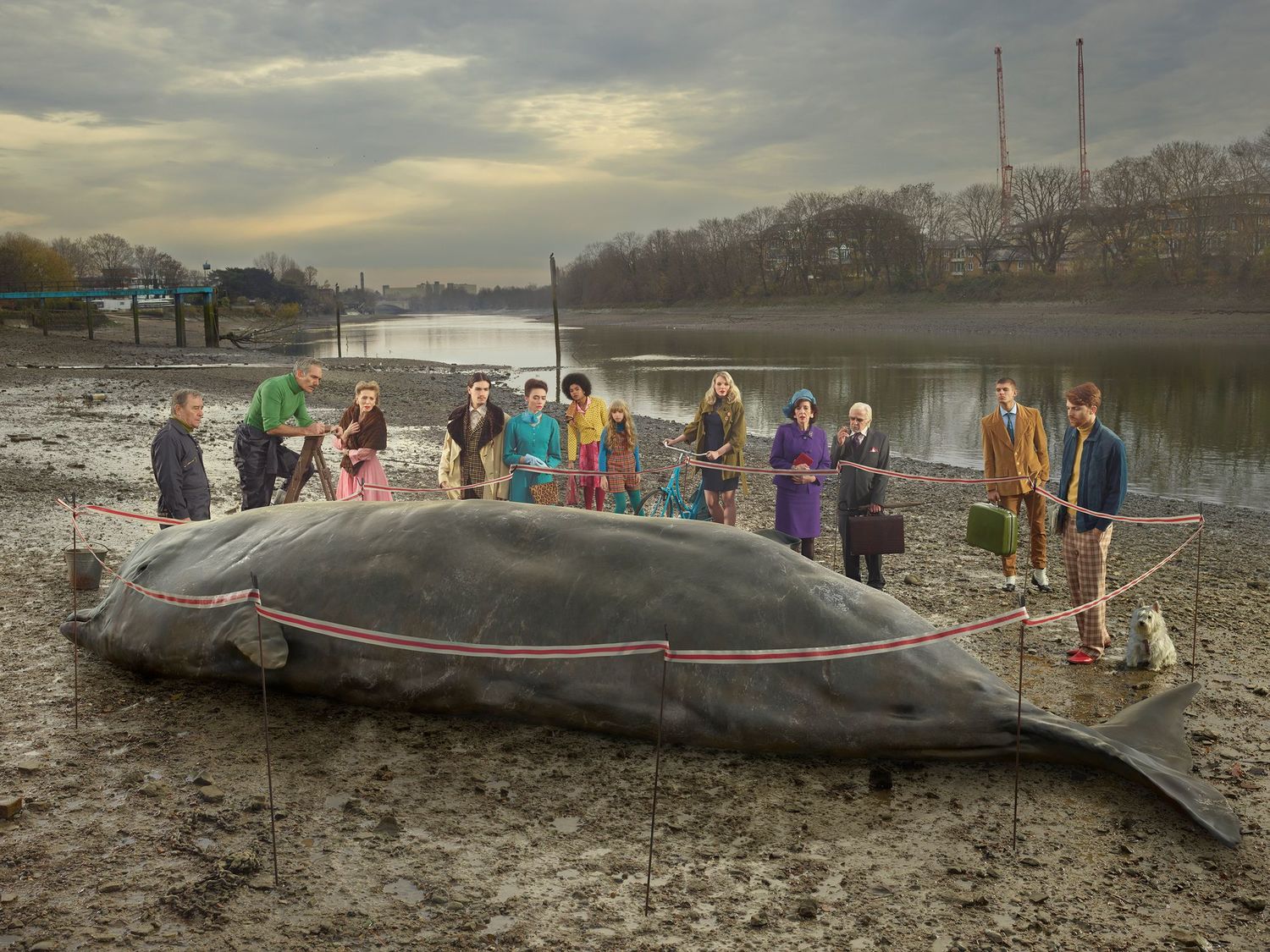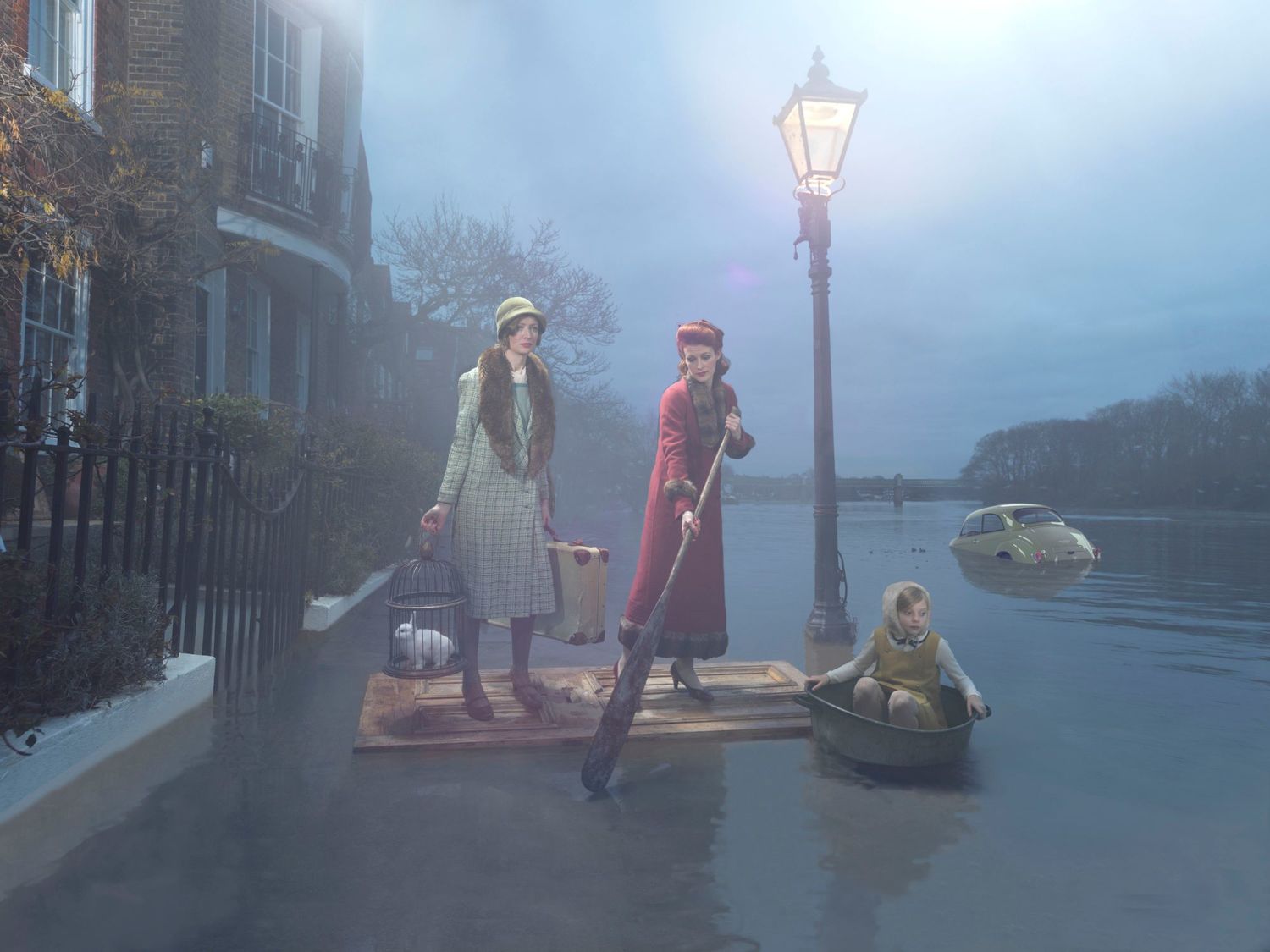Over 200 miles in length, the Thames is England’s longest river, snaking its way from Gloucestershire through London and out again into the North Sea. Once a busy and bustling trade and transport route, it has played a central role in the construction and evolution of the capital’s identity, and bears the marks of centuries of transformation. For this reason, the iconic waterway, rich with countless stories that span London’s history, has acted as both an inspiration and a repository for many artists across time. Julia Fullerton-Batten, who moved from Germany to London thirty years ago, is one of the latest artists to fall under its spell. Her project Old Father Thames is an ode to the events, tales and legends that are embedded in the river’s shores.
Known for her meticulously-staged photographic tableaux, all of Fullerton-Batten’s projects demand a huge amount of research, planning and production—and Old Father Thames is no exception. The photographer has always been intrigued by the river that flows through her adopted hometown, and a couple of years ago she decided to apply her cinematic vision to its past. The process of translating the stories she came across during her research photographically was a big challenge—one that included carefully sourcing period clothes and styling to evoke the correct era, navigating the river’s tide times into her daily schedule, and securing permission to shoot from the Port of London Authority.
Bringing the past alive in full technicolor, the stories Fullerton-Batten reimagines as photographs speak of London’s diverse population across the ages, as well the ever-shifting environment that surrounds them. “The history of the Thames is awash along its entire length with a myriad of stories encompassing birth, baptism, death, love, prostitution, art, traditions, riverside-scavenging youngsters, flooding, sun-bathing on the shore close to Tower Bridge, the story of the ‘Ladies Bridge’, and countless other whimsical, idiosyncratic and tragic happenings,” explains the photographer.

Some of the tableaux show dramatic encounters with nature that are so incongruous with city living that they border on surreal, such as a photograph of a huge beached whale, lying motionless on the shores of the Thames surrounded by concerned passersby. A five-metre-long female northern bottlenose whale was indeed found swimming in central London in 2006, the first sighting of a whale since records began in 1913. Following attempts to rescue the creature on the banks of the river, it sadly passed away. The stranded whale has now become a tragic part of London’s history, its skeleton hanging in the Natural History Museum.

Other scenes pay tribute to the lives of the people that make up London’s social fabric. In one, we are transported back to Victorian England, where young impoverished children, or ‘mudlarkers’, would scavenge the mud of the river bank at low tide, in search of items of value to sell. In another, the iconic Tower Bridge acts as an unlikely backdrop for stay-at-home vacationers, sunning themselves on the river’s shore. As far back as the eighteenth century, Tower Beach was a popular spot for swimming and sunbathing until concerns for quality of the Thames’ water led to its closure in 1971. In Fullerton-Batten’s image, it is 1950s London that is evoked, complete with vintage beachwear and seaside entertainment.

Among the collection of scenes from different periods of London’s history, Old Father River commemorates and celebrates some of the city’s more unusual activities like swan upping, where swans are marked in order to indicate ownership by the crown. An important practice during the middle ages, this ceremony still occurs every July to keep an eye on and number the swans that inhabit the Thames. Seen as a whole, Old Father Thames surpasses the tales of the river to become an imaginative reflection on the people, places and things that make-up British culture. “The range of stories reveal a highly diverse patchwork of national, personal and community events,” says Fullerton-Batten.
Editor’s Note: Julia Fullerton-Batten’s Old Father Thames was the series winner for the Imaginative Storytelling category of this year’s LensCulture Visual Storytelling Awards. Be sure to check out the other winners and finalists here.












